Fix Screen Tearing and Boost Game Performance with Vertical Sync
- Home
- Support
- Tips Renee Video Editor Pro
- Fix Screen Tearing and Boost Game Performance with Vertical Sync
Summary
Learn how to optimize your game performance and solve screen tearing issues by enabling vertical synchronization. Discover other effective methods in this comprehensive guide.

- 1. Introduction to vertical synchronization related knowledge
- ◆ 1. What is FPS? What is refresh rate?
- ◆ 2. What is screen tearing?
- ◆ 3. Vertical Sync – A way to eliminate screen tearing
- ◆ 4. The relationship between the frame rate of the graphics card and the refresh rate of the screen
- 2. Should vertical sync be enabled?
- ◆ 1. Pros and cons of enabling vertical sync
- ◆ 2. When to turn on or off vertical sync
I. Introduction to vertical synchronization related knowledge
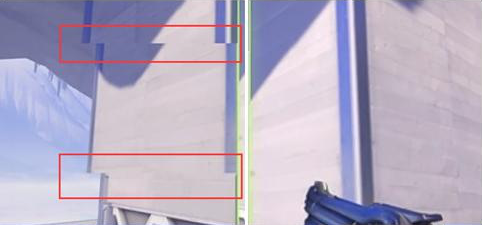
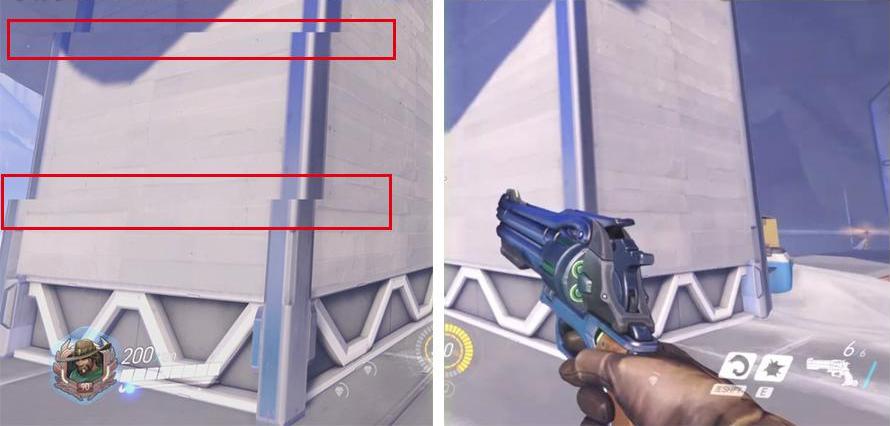
For the phenomenon of screen tearing, gamers tend to feel very uncomfortable about it, and in severe cases, they may also make people feel dizzy and vomit. We can’t help but wonder why screen tearing occurs? How to solve it? What does it have to do with vertical sync? Below we will introduce various related knowledge one by one to answer the above questions!
Before knowing other knowledge, you first need to know what is FPS and refresh rate!

Multiple edit tools Edit videos with tools like cut, crop, merge and rotate.
Multiple effects Users can add effects, watermark, subtitle, background music, and even remove watermarks.
Support multiple formats It can edit videos / audios in different formats.
Format Conversion Support to convert videos and audios into different formats.
Output formats recommendation Provide output format recommendation on the basis of different models.
Different Effects Effects, watermark, background music and subtitle can be added to videos.
Multiple Edit Tools Merge, crop, rotate, cut and transform video easily.
Convert Convert videos and audios into different formats.
Free TrialFree TrialFree Trial 2000 users have downloaded and enjoyed Renee Video Editor Pro!1. What is FPS? What is refresh rate?
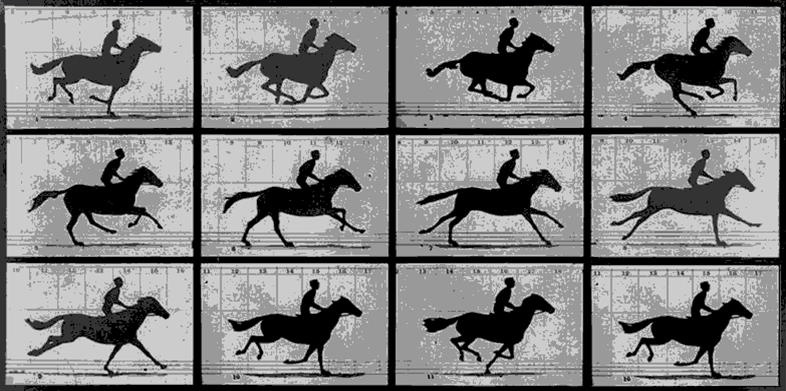
Generally speaking, 20FPS is considered the minimum standard for role-playing game (RPG) type games to run. For high-speed games such as CS and Need for Speed, 60FPS can get ideal effects, and the picture effect will be very smooth. Although the higher the frame rate, the better the experience, but the current display performance optimization limit is 60 FPS.
The following is a comparison of 15FPS, 30FPS and 60FPS. It can be clearly seen that 60FPS movement is very smooth, while 15FPS and 30FPS will have certain stuttering and smearing, so the number of frames will affect the image quality.

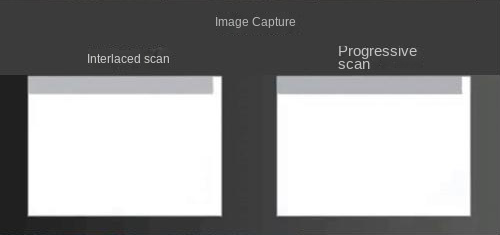
2. What is screen tearing?
The main cause of screen tearing is that the graphics card generates frames faster than the monitor can process them, and the monitor cannot keep up with the graphics card. When the display is processing the first frame transmitted by the graphics card, the second frame arrives again, causing one or two frames to appear on the same screen at the same time, and screen tearing occurs.
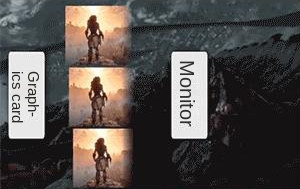
3. Vertical Sync - the way to eliminate screen tearing
What is Vertical Synchronization (VSync)? Vertical synchronization, also known as field synchronization, means that the graphics card is restricted by the vertical synchronization signal when drawing 3D graphics, so that the output signal of the graphics card is synchronized with the refresh rate of the display. The main function of vertical synchronization is to force the frame rate of the graphics card to be completely synchronized with the refresh rate of the display, eliminating screen tearing and making the picture smoother and more comfortable.
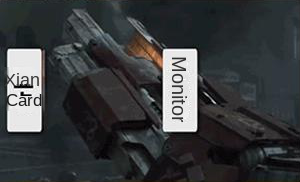
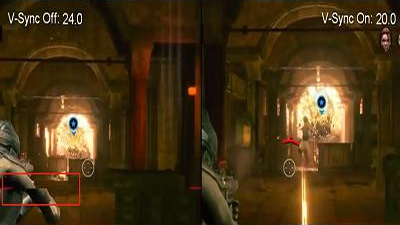
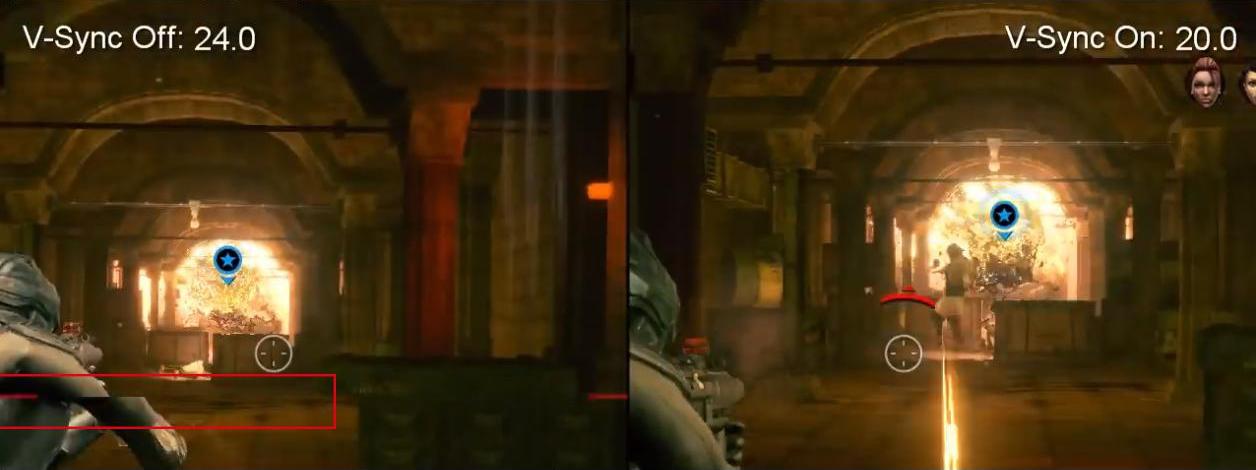
On the left, vertical synchronization is turned off, and on the right, vertical synchronization is turned on. Through the comparison of the pictures, it can be clearly seen that the arm in the left picture is disconnected and torn, while the picture on the right is normal, and there is no screen tearing Phenomenon. In addition to the screen tearing phenomenon in high-speed running games, this phenomenon may also occur when using a browser to watch videos. Turning on vertical synchronization can prevent screen tearing when the screen moves at high speed.
4. The relationship between the frame rate of the graphics card and the refresh rate of the screen
① Screen tearing problem
When running a high-speed game, you may experience tearing of the game screen. Screen tearing can be simply understood as the out-of-sync display on the top and bottom of the screen. The performance of the current graphics card has been greatly improved, and the output frame rate is also very high. However, the general display refresh rate is 60Hz. If the output frame rate of the graphics card is higher than 60FPS, the screen will be out of sync and the screen will tear.
② Frame Skip problem (Frame Skip)
The frame skipping problem means that the display refresh rate cannot keep up with the frame rate (FPS) of the game, and the display discards part of the screen. If the computer performance is insufficient, this kind of frame skipping problem usually occurs after vertical synchronization is turned off in some high-speed sports PC games and high-definition video playback.
It has been explained above that the problems of screen tearing and frame skipping occur because the frame rate of the graphics card is higher than the refresh rate of the monitor, and the two are not synchronized. So what happens if the refresh rate of the graphics card is less than or equal to the refresh rate of the monitor?
Relationship between screen refresh rate and graphics card frame rate:
| picture condition | |
|---|---|
| When the graphics card frame rate is equal to the screen refresh rate | The whole picture will be very harmonious and smooth |
| When the graphics card frame rate is less than the screen refresh rate | The image freezes and the picture is not smooth |
| When the frame rate of the graphics card is greater than the screen refresh rate | If it is a shooting or racing game/ if the scene changes quickly/ there will be scenes of picture loss and screen tearing. |
Does choosing a monitor with a refresh rate of 144Hz or higher prevent screen tearing?
Actually not! Screen tearing will occur no matter how high the refresh rate you choose, but the degree of tearing will vary. It is very obvious if there is screen tearing on a 60 Hz monitor, but it is difficult to distinguish the tearing on a 144 Hz monitor, and you will only see the screen “jitter”, and the monitor with a higher Hz will appear relatively smooth and smooth. To truly eliminate screen tearing, you can choose to buy a monitor with G-Sync and FreeSync vsync technology.
At present, the refresh rate of e-sports monitors on the market has basically reached 144 Hz. If you want to pursue a smoother picture, you can also choose 165 Hz, 200 Hz, or 240 Hz monitors.
II. Should vertical sync be enabled?
1. The advantages and disadvantages of turning on vertical synchronization
If you experience screen tearing, vertical sync is worth a shot. This will bring your graphics processor down to the same level as your monitor and allow them to work better together, eliminating screen tearing when done correctly. It’s also useful for applications (such as very old games) where the graphics processor severely exceeds the graphics demands.
② Disadvantages of turning on vertical synchronization
After the vertical synchronization is turned on, the graphics card will wait for the vertical synchronization signal before drawing 3D graphics. When the display is refreshed, the graphics card will output the signal, which may cause delay problems. You may experience a slight delay in input such as keystrokes and mouse clicks. In games that require reflexes and quick reflexes, this can be deadly.
In addition, if the performance of the hardware device is poor and the frame rate is lower than the refresh rate, if vertical synchronization is turned on, the frame rate will drop significantly, which will lead to a relatively serious freeze phenomenon. Technologies like triple buffering can help prevent this, but it’s not recommended for low-end graphics cards.
Triple buffering means that there are two back buffers and one front buffer. The back buffer is responsible for drawing the image data, while the front buffer is read by the graphics card to display the image on the monitor. After the front buffer sends the image to the display, the image is copied from the back buffer. Turning on triple buffering can solve the problem of operation delay and frame rate drop caused by turning on vertical sync. But the problem with triple buffering is that the memory usage is very large.

2. When to turn on or off vertical sync
You can decide whether to enable vertical sync according to your actual situation:
| specific situation | suggestion |
|---|---|
| ● When playing a first-person shooter (FPS) game/ the frame rate is too high and you feel headache and dizziness ● The screen is tearing/ which affects viewing and game operation ● The graphics card consumes too much power and the temperature is too high | Turn on vertical sync |
| ● Obvious frame drop phenomenon/ the greater the movement of the character/ the more obvious the freeze ● Competitive games have obvious delay after turning on vertical synchronization/ which affects the accuracy of game operation ● The performance of the computer graphics card is low/ and the frame rate is far below the screen refresh rate ● Want to pursue clear picture quality | turn off vertical sync |

Multiple edit tools Edit videos with tools like cut, crop, merge and rotate.
Multiple effects Users can add effects, watermark, subtitle, background music, and even remove watermarks.
Support multiple formats It can edit videos / audios in different formats.
Format Conversion Support to convert videos and audios into different formats.
Output formats recommendation Provide output format recommendation on the basis of different models.
Different Effects Effects, watermark, background music and subtitle can be added to videos.
Multiple Edit Tools Merge, crop, rotate, cut and transform video easily.
Convert Convert videos and audios into different formats.
Free TrialFree TrialFree Trial 2000 users have downloaded and enjoyed Renee Video Editor Pro!III. How to enable or disable vertical sync
1. Set in the game
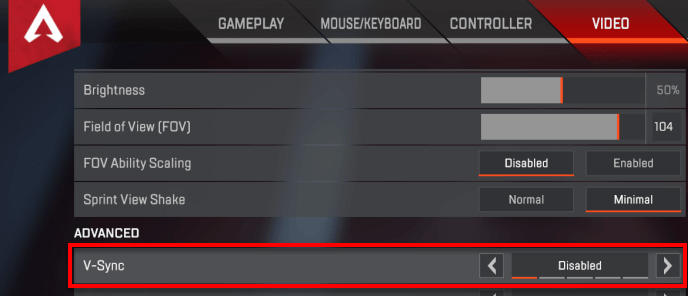
2. Set in the graphics card driver
NVIDIA graphics card driver settings:
① First right-click on the desktop and select NVIDIA Control Panel. If you do not see this option, please update the graphics card driver.
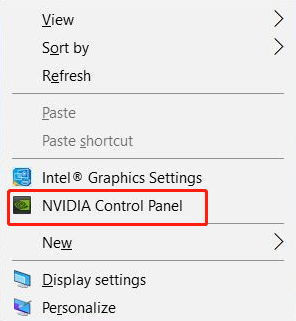
② Enter the interface and click to select Manage 3D Settings, you can see many screen options. Find Vertical Sync, select On/Off, and finally click Apply at the bottom right. This eliminates screen tearing when playing games.
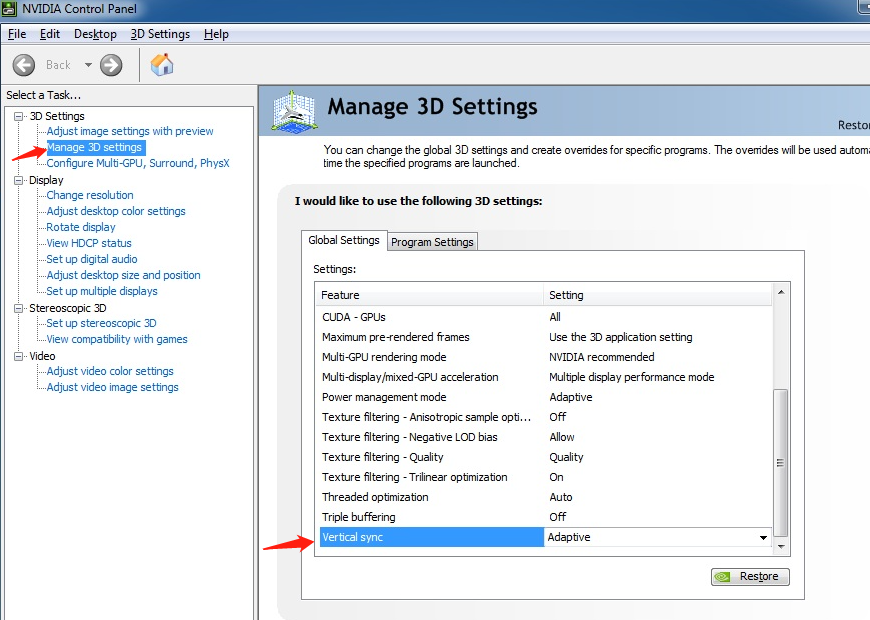
① Right-click on the desktop and select Catalyst Control Center (the name of the dual-graphics card model is the property of the display card).
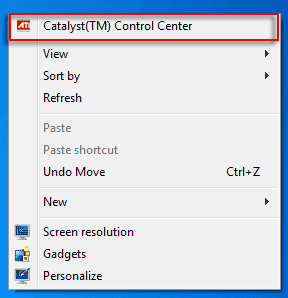
② Select the preference option Advanced View in the upper right corner.
③ Click Game > 3D Application Settings
④ On the settings page, pull down to find Wait for vertical refresh and select off/on; adjust Mipmap detail level and anti-aliasing mode to focus on performance, and finally click Apply. Then the setting is complete. If the current game frame rate is insufficient, please enable vertical update. If the game speed is very stable and you want to further increase the frame rate, please turn off vertical update.
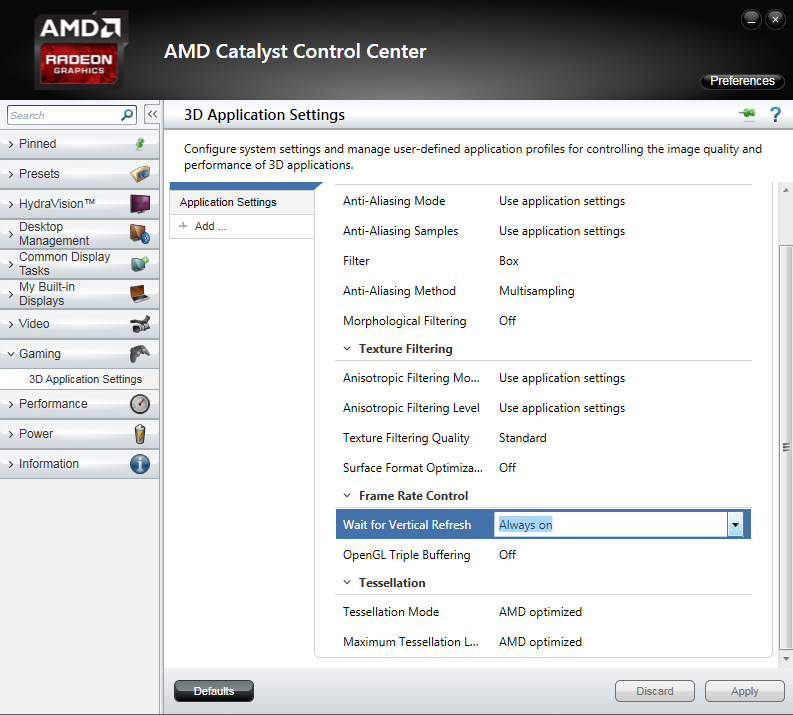
In fact, in addition to turning on vertical synchronization through the above two methods to eliminate screen tearing effects, you can also use faster and advanced vertical synchronization technology to get better results. What is the method, hurry up and watch the content below!
IV. Other ways to eliminate screen tearing
As a technology born in the old days, vertical synchronization cannot be realized directly on the monitor. It can only be forced through specific commands to force the graphics card to use the monitor refresh rate as its own work guide frame rate, so that the graphics card and the monitor can achieve complete synchronization. . Now G-Sync and FreeSync two vertical synchronization technologies can completely eliminate screen tearing. This part will give you these two vertical synchronization techniques in detail.

1. Introduction of FreeSync and G-Sync
G-Sync is a proprietary Adaptive Sync technology made by NVIDIA. It’s designed to give gamers a smoother gaming experience by automatically matching the monitor’s refresh rate to the frame rate pushed out by the GPU, eliminating screen stuttering or tearing. It currently works with all (low) mid- to high-end GTX graphics cards (GTX 650Ti and newer), but gaming monitors don’t come standard with this technology. If you want to use G-Sync, be sure to double check that your monitor is compatible.
Both of these two technologies require that both the monitor and the graphics card support the corresponding technology before they can be used. For example, if your monitor uses G-Sync technology, then your graphics card must be paired with an NVIDIA-made graphics card to be effective. In the same way, if your monitor uses FreeSync technology, then you must use an AMD graphics card.
2. The difference between FreeSync and G-Sync
Whether it’s FreeSync or G-Sync, they were born to solve the problem of screen tearing. Although their functions are similar, the current application environments and solutions are different, which also makes there is a slight connection between the two technologies, but each has its own strengths.
The difference between FreeSync and G-Sync:
| FreeSync | G-Sync | |
|---|---|---|
| definition | A vsync-like technology implemented by an AMD display combined with a graphics card | A vsync-like technology implemented by NVIDIA's display combined with graphics card |
| Is it free | Free authorization | Charge Authorization |
| connectivity | no input limit | Most monitors only have one input |
| input delay | Input delay depends on manufacturer's design | Low input lag thanks to gaming-focused G-Sync module |
| Refresh rate adjustment | Various frequency bands including 36Hz~240Hz/ 21Hz~144Hz/ 17Hz~120Hz and 9Hz~60Hz | Only supports refresh rate adjustment within the range of 30-144Hz |
| Supported Graphics Cards | AMD R7 series and above products/ AMD RX series/ AMD 6th generation APU and newer versions | NVIDIA GTX 650 Ti and above/ NVIDIA GTX 960M and above |
V. How to update the graphics card driver for maximum game performance
1. Why update the graphics driver
In fact, it is not recommended that you update your computer motherboard, sound card, network drivers, because this will not improve the game speed, and after updating, new bugs will often be introduced. However, for graphics card update drivers, that’s a different story. Both NVIDIA and AMD release new graphics card drivers frequently, and these updates usually result in significant improvements to the performance of the graphics card driver. With the introduction of various new games and Intel’s increasing emphasis on integrated graphics performance, NVIDIA and AMD have also begun to frequently release video driver updates.
2. How to check the type of computer graphics card
The easiest way is as follows:
① Click Start in the lower left corner of the computer screen, enter system information in the search box, and press Enter.
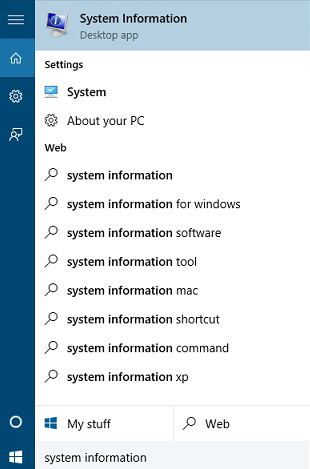
② In the System Information window, click Components to get the drop-down menu, and then click Display. On the right, look for the graphics adapter model number in the Adapter Type or Adapter Description, and you’ll be able to see what type of graphics card your computer has.
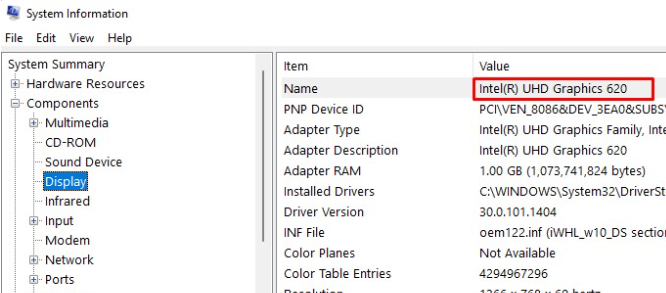

Multiple edit tools Edit videos with tools like cut, crop, merge and rotate.
Multiple effects Users can add effects, watermark, subtitle, background music, and even remove watermarks.
Support multiple formats It can edit videos / audios in different formats.
Format Conversion Support to convert videos and audios into different formats.
Output formats recommendation Provide output format recommendation on the basis of different models.
Different Effects Effects, watermark, background music and subtitle can be added to videos.
Multiple Edit Tools Merge, crop, rotate, cut and transform video easily.
Convert Convert videos and audios into different formats.
Free TrialFree TrialFree Trial 2000 users have downloaded and enjoyed Renee Video Editor Pro!3. Download and update the driver
① After opening the download page of the corresponding graphics card driver, in option 1, select Product Type, Product Series, Product, Operating System, and click SEARCH after the selection is completed.
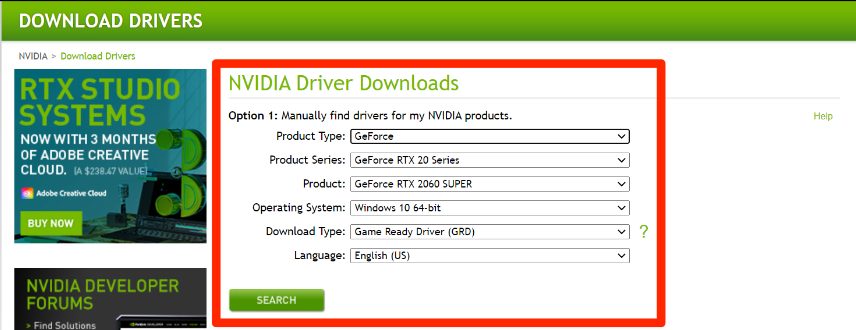
② After completing the above steps, enter the download page and click DOWNLOAD to start the download.
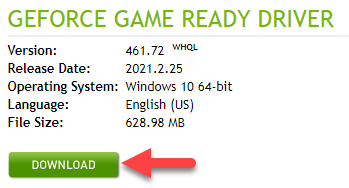
If your computer is using an NVIDIA adapter, it is recommended that you downloadNVIDIA GeForce Experience program. NVIDIA GeForce Experience can keep the driver up to date at all times, optimize game settings with one click, and quickly improve the experience performance of the game.
As for the download of the other two graphics card drivers, the method is the same, you only need to enter the detailed information of the adapter on the website, and you can download it directly!
Relate Links :
How To Download or Record Video/TV Shows from RTBF?
27-01-2024
Amanda J. Brook : Learn how to download videos from Belgium's popular website RTBF for free. This article reveals the method to...
Record Videos on PC Screen: The Ultimate Guide
23-04-2024
John Weaver : How to record video on pc? Master the art of screen recording for gameplay, software tutorials, and video...
Free Anime Websites: Ultimate Guide To Recording Videos
21-09-2023
Ashley S. Miller : Discover the top animation websites for all ages and learn video recording and editing techniques in this comprehensive...




